About Us
What do we do at QAEco?
QAEco work on a range of topics, species and locations related to ecosystem management. Overall, we are committment to research regarding conservation and management decisions. We are passionate about modelling using a range of methods to understand more about the natural world. The topic highlighted below are a broad overview of our work. While we are based in Melbourne, Victoria, Australia our prjects are located throughout Australia with many international collaborations. For more information, collaborations or potential students, please contact the key people identified for the topic.
Threatened Species and Communities
Globally, biodiversity is declining. Australia has a high rate of mammal extinctions with many more speices at risk of extinction. At QAEco many researchers are involved in threatened species and community studies to combate this issue, particularly in association with the National Environmental Science Programme (NESP) Threatened Species Hub (2014-2021).
Key contacts:
Brendan, Mick, David Duncan, Pete, Anja,
Publications:
Bennett, A., Duncan, D.H., Rumpff, L. and Vesk, P.A., 2020. Disentangling chronic regeneration failure in endangered woodland ecosystems. Ecosphere, 11(1), p.e02998.
Mott, R., Selwood, K.E. and Wintle, B.A., 2020. Threatened bird conservation in Murray-Darling Basin wetland and floodplain habitat: Final report. TSR Hub.
Soanes, K. and Lentini, P.E., 2019. When cities are the last chance for saving species. Frontiers in Ecology and the Environment, 17(4), pp.225-231.
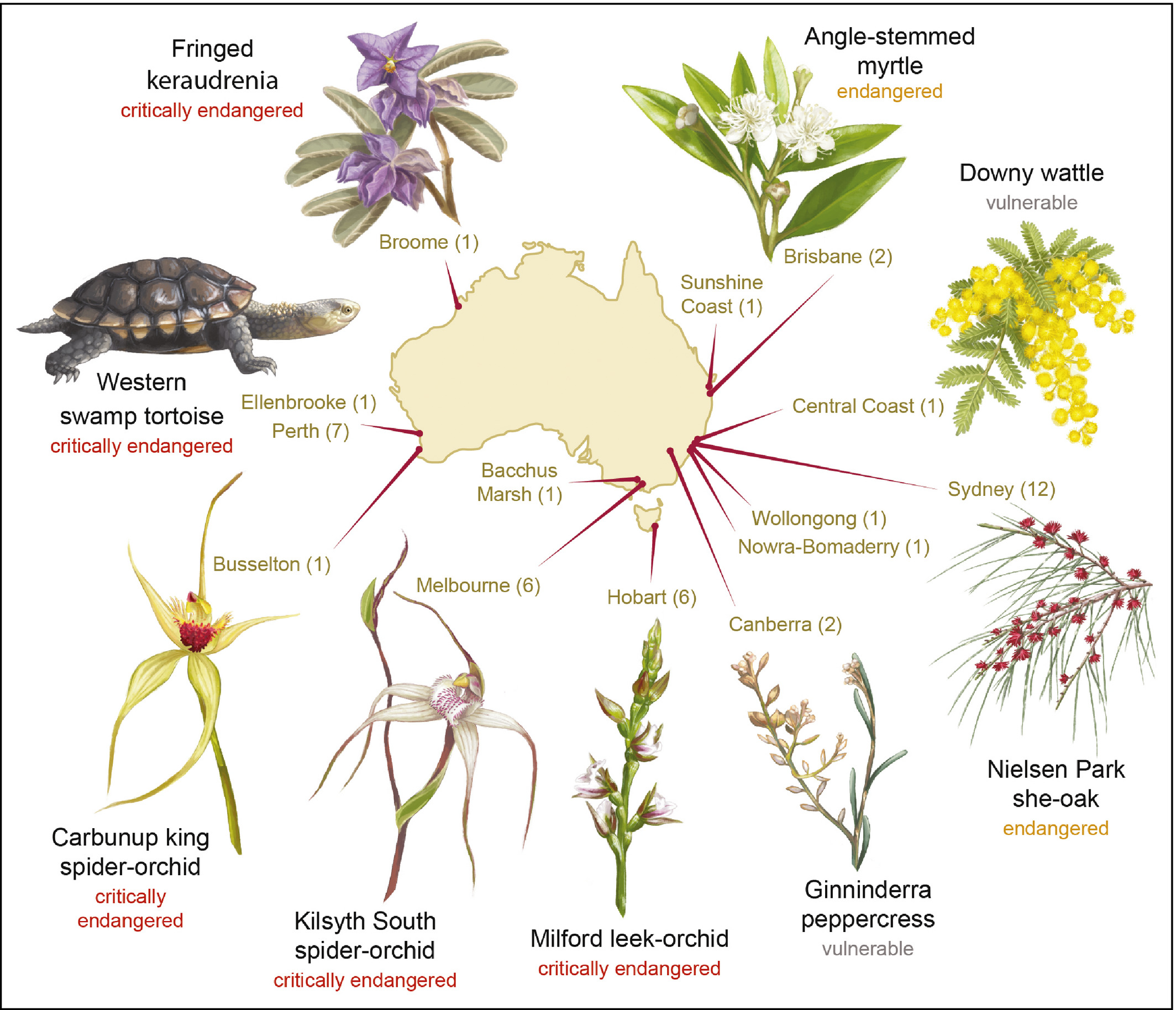 Figure from Soanes, K. and Lentini, P.E. (2019). Artwork by E Pirtle.
Figure from Soanes, K. and Lentini, P.E. (2019). Artwork by E Pirtle.
Species Distribution Modelling
Understanding where species may be is essential to spatial conservation planning. Species Distribution Models (SDMs), also known as niche or habitat models, attempts to predict a species distribution by relating where they are known to occur and possibly known not to occur with environmental characteristics.
Key contacts:
Jane, Jose, Guru, Mick, Pete, David W, Saras, Gerry, Ian, Roozbeh, Brendan, Darren
Publications:
Valavi, R., Elith, J., Lahoz‐Monfort, J.J. and Guillera‐Arroita, G., 2019. blockCV: an R package for generating spatially or environmentally separated folds for k-fold cross-validation of species distribution models. Methods in Ecology and Evolution, 10(2), pp.225-232.
Guillera‐Arroita, G., Lahoz‐Monfort, J.J., Elith, J., Gordon, A., Kujala, H., Lentini, P.E., McCarthy, M.A., Tingley, R. and Wintle, B.A., 2015. Is my species distribution model fit for purpose? Matching data and models to applications. Global Ecology and Biogeography, 24(3), pp.276-292.
Lahoz‐Monfort, J.J., Guillera‐Arroita, G. and Wintle, B.A., 2014. Imperfect detection impacts the performance of species distribution models. Global Ecology and Biogeography, 23(4), pp.504-515.
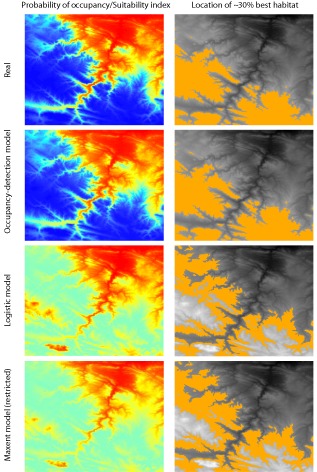 Figure from Lahoz‐Monfort, J., et al., (2014).
Figure from Lahoz‐Monfort, J., et al., (2014).
Range and Population Dynamics
Description here
Key contacts:
Nat, Casey, Bron, Gerry, Jane, Guru, David U, Nick G, Saras, Brendan
Publications:
Visintin, C., Briscoe, N., Woolley, S.N.C., Lentini, P.E., Tingley, R., Wintle, B.A. and Golding, N. 2020. steps: Software for spatially and temporally explicit population simulations. Methods in ecology and evolution, 11(4), pp.596-603.
Briscoe, N.J., Elith, J., Salguero‐Gómez, R., Lahoz‐Monfort, J.J., Camac, J.S., Giljohann, K.M., Holden, M.H., Hradsky, B.A., Kearney, M.R., McMahon, S.M. and Phillips, B.L., 2019. Forecasting species range dynamics with process‐explicit models: matching methods to applications. Ecology Letters, 22(11), pp.1940-1956.
Hradsky, B.A., Kelly, L.T., Robley, A. and Wintle, B.A., 2019. FoxNet: An individual‐based model framework to support management of an invasive predator, the red fox. Journal of Applied Ecology, 56(6), pp.1460-1470.
Elith, J., Kearney, M. and Phillips, S., 2010. The art of modelling range‐shifting species. Methods in ecology and evolution, 1(4), pp.330-342.
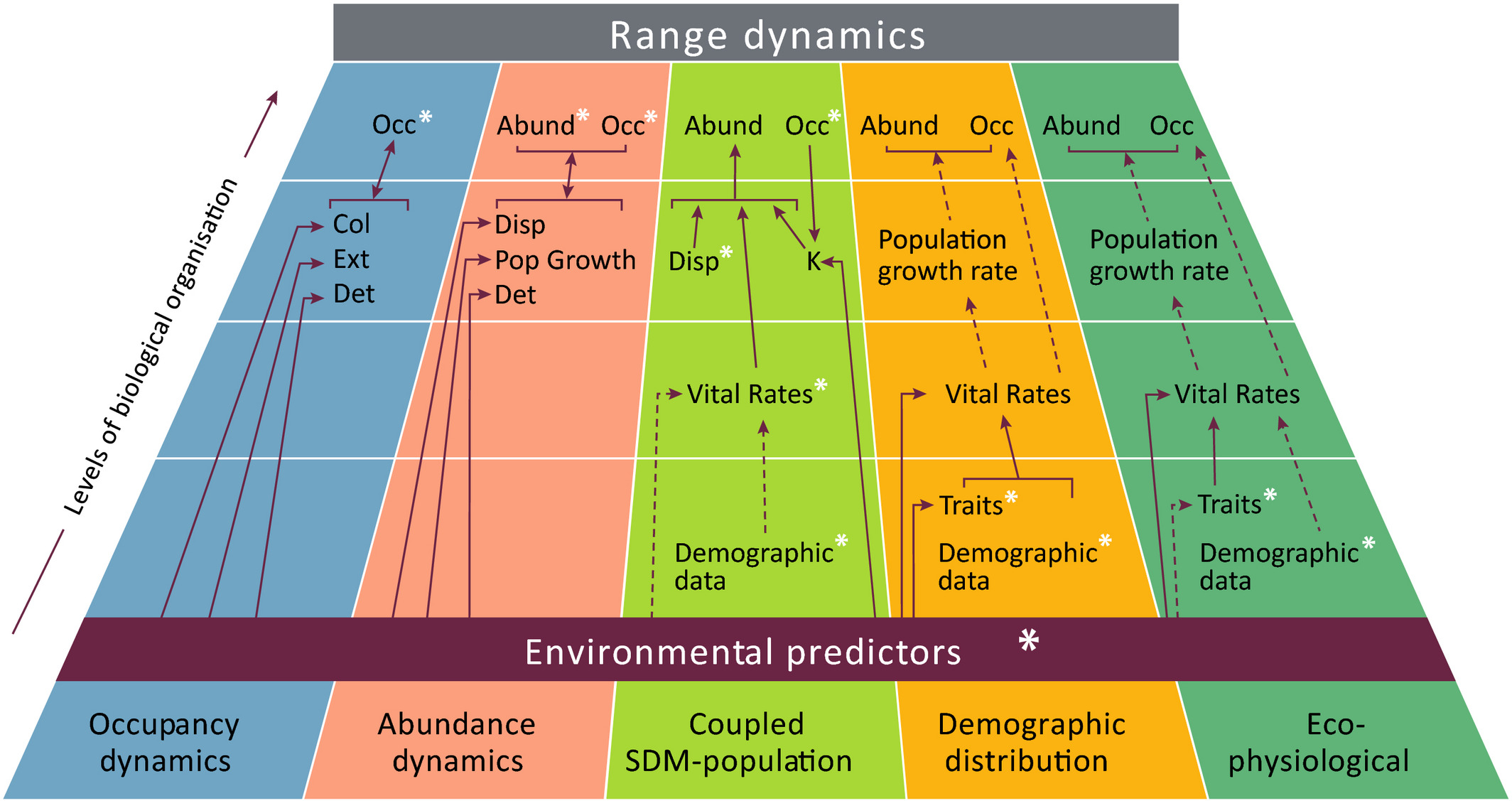 Figure from Briscoe, N., et al., (2019).
Figure from Briscoe, N., et al., (2019).
Population and Long-term Monitoring
Description here
Key contacts:
Mick, Guru, K, Cindy, Jose, Emily, Kevin, Cindy, Bec, Bendan, Casey, Bron, Darren, Naomi,
Publications:
Wintle, B.A. 2020. Monitoring bogon moth population change. TSR Hub.
Hauser, C.E., Southwell, D., Lahoz-Monfort, J.J., Rumpff, L., Benshemesh, J., Burnard, T., van Hespen, R., Wright, J., Wintle, B. and Bode, M., 2019. Adaptive management informs conservation and monitoring of Australia’s threatened malleefowl. Biological Conservation, 233, pp.31-40.
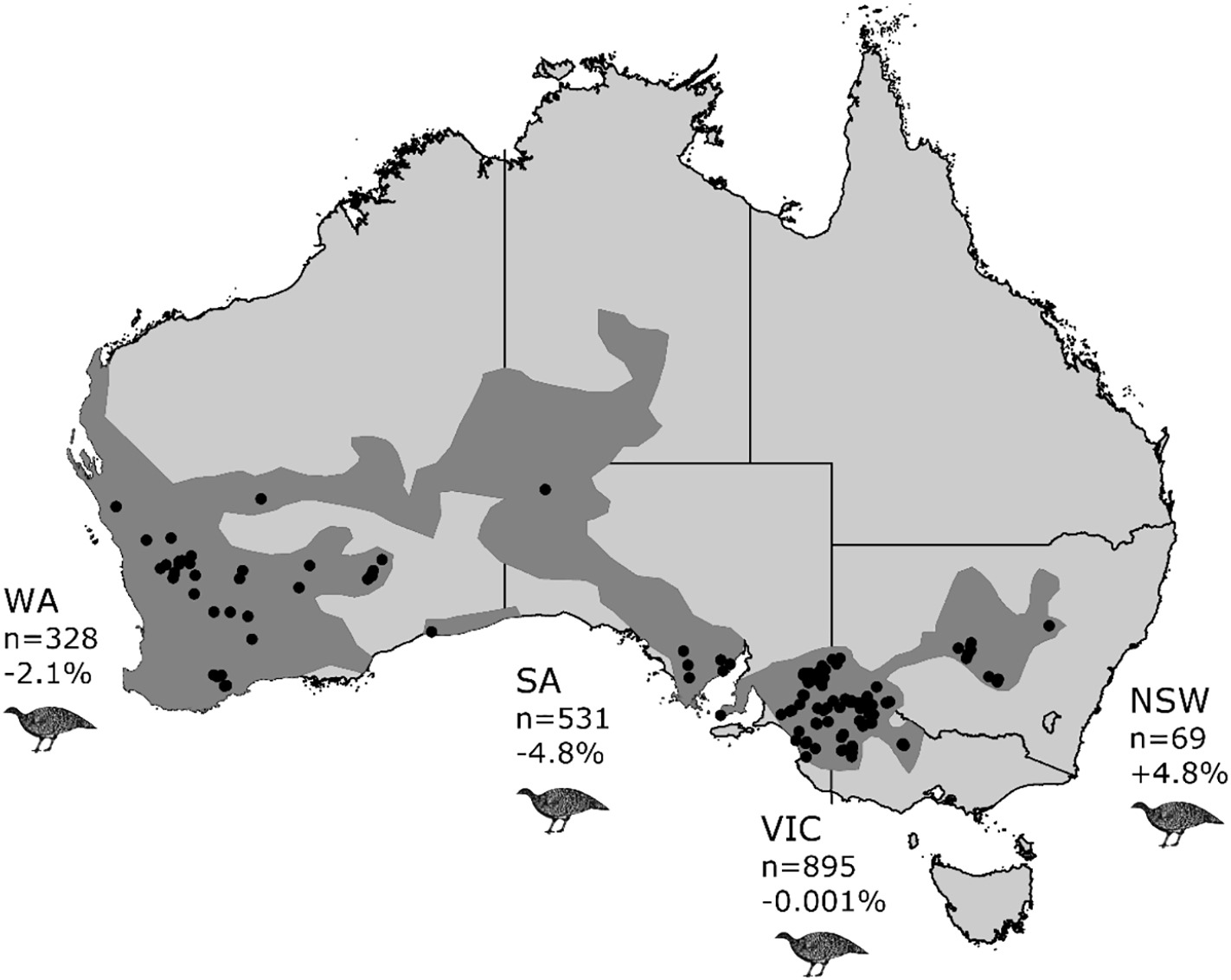 Figure from Hauser, C., et al., (2019).
Figure from Hauser, C., et al., (2019).
Bayesian Statistics and Modelling
Description here
Key contacts:
Mick, Cindy, Gerry Ryan, Pete Vesk, Dave Duncan, David W, Will Morris
Publications:
McCarthy, M.A. 2007. Bayesian methods for ecology. Cambridge University Press.
Traits and Generalisations
Description here
Key contacts:
Pete, Saras, Will Morris
Publications:'
Vesk, P.A., Morris, W.K., Neal, W.C., Mokany, K. and Pollock, L.J., 2021. Transferability of trait‐based species distribution models. Ecography, 44(1), pp.134-147.
 Figure from Vesk, P.A., et al., (2021).
Figure from Vesk, P.A., et al., (2021).
Structured decision making, prioritisation and optimisation
Description
Key contacts:
Libby Rumpff, Jutta, Elliot, Heini, Jose, Brendan Wintle, Erica, Kat Selwood, Cindy, Mick
Publications:
Marshall, J., Valavi, R., Connor, L. O., Cadenhead, N., Southwell, D., Wintle, B. A., & Kujala, H. 2021. Quantifying the impact of vegetation-based metrics on species persistence when choosing offsets for habitat destruction. Conservastion Biology, 35(2), pp.567-577.
Selwood, K., Wintle, B. A., & Kujala, H. 2019. Collaborative conservation planning: Quantifying the contribution of expert engagement to identify spatial conservation priorities. Conservastion Letters, 12(6).
Fraser, H., Rumpff, L., Yen, J.D., Robinson, D. and Wintle, B.A., 2017. Integrated models to support multiobjective ecological restoration decisions. Conservation Biology, 31(6), pp.1418-1427.
Kujala, H., Whitehead, A.L., Morris, W.K. and Wintle, B.A., 2015. Towards strategic offsetting of biodiversity loss using spatial prioritization concepts and tools: A case study on mining impacts in Australia. Biological Conservation, 192, pp.513-521.
Hauser, C.E. and McCarthy, M.A., 2009. Streamlining ‘search and destroy’: cost‐effective surveillance for invasive species management. Ecology Letters, 12(7), pp.683-692.
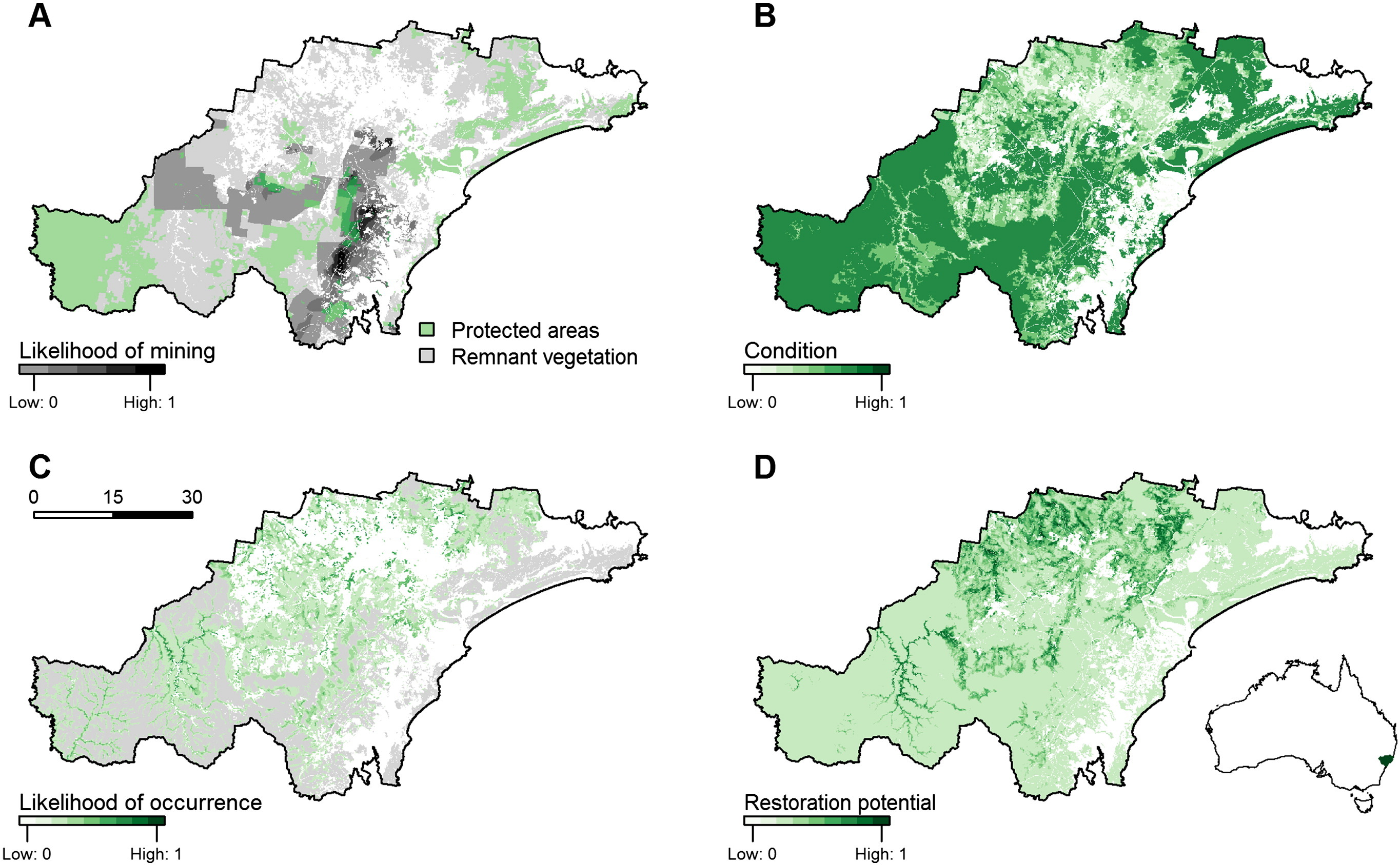 Figure from Kujala, H., (2015).
Figure from Kujala, H., (2015).
Reproducibility and Open-access Science and Data
Description here
Key contacts:
Fiona, David, Elliot
Publications:
Wintle, B., Mody, F., Smith, E., Hanea, A., Wilkinson, D.P., Hemming, V., Bush, M., Fraser, H., Thorn, F.S., McBride, M. and Gould, E., 2021. Predicting and reasoning about replicability using structured groups.
Fraser, H., Bush, M., Wintle, B., Mody, F., Smith, E., Hanea, A., Gould, E., Hemming, V., Hamilton, D., Rumpff, L. & Wilkinson, D.P., 2021. Predicting reliability through structured expert elicitation with repliCATS (Collaborative Assessments for Trustworthy Science).
Fidler, F., & Wilcox, J., 2018. Reproducibility of scientific results.
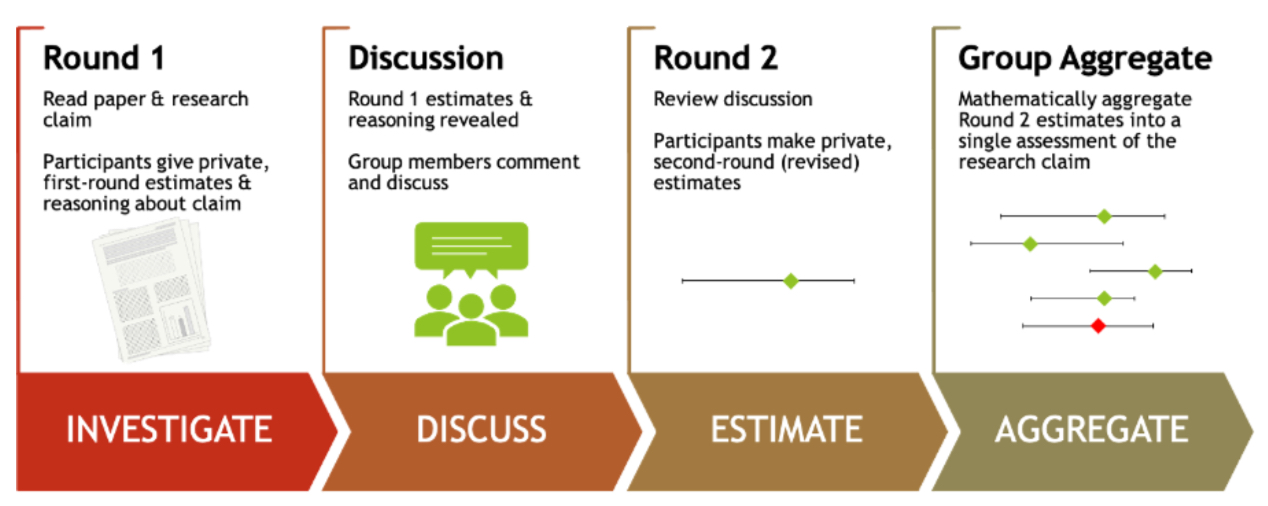 Figure from Fraser, H., et al., (2021).
Figure from Fraser, H., et al., (2021).
Bio-Economical Modelling and Sustainable Finance
Description here
Key contacts:
Brendan, Pia, Payal, Simon, Matthew C, Tom Kompas, Natasha
Publications:
Kapitza, S., Van Ha, P., Kompas, T., Golding, N., Cadenhead, N.C., Bal, P. and Wintle, B.A., 2021. Assessing biophysical and socio-economic impacts of climate change on regional avian biodiversity. Scientific reports, 11(1), pp.1-10.
Wintle, B.A., Cadenhead, N.C., Morgain, R.A., Legge, S.M., Bekessy, S.A., Cantele, M., Possingham, H.P., Watson, J.E., Maron, M., Keith, D.A. and Garnett, S.T., 2019. Spending to save: What will it cost to halt Australia’s extinction crisis?. Conservation Letters, 12(6), p.e12682.
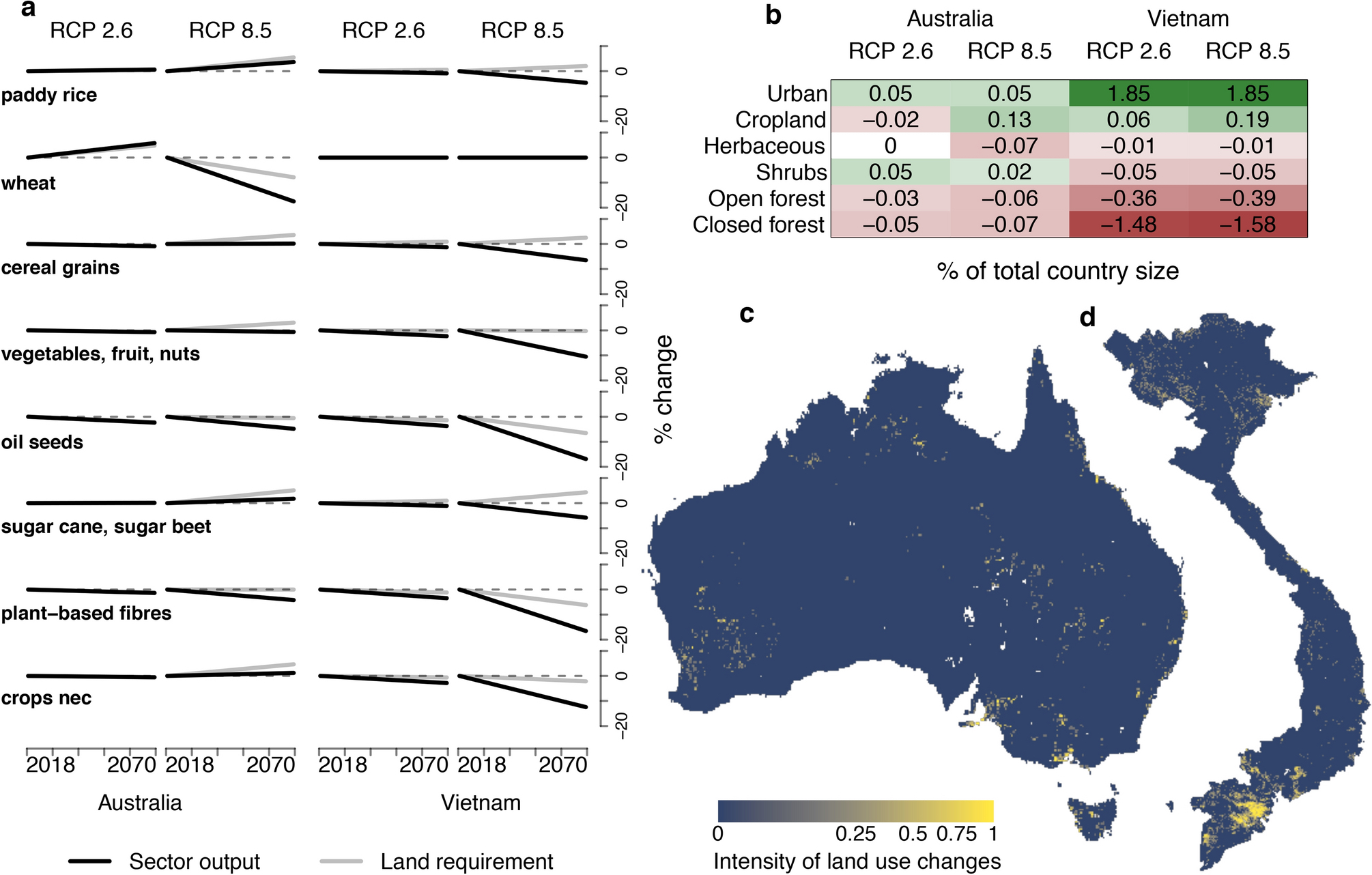 Figure from Kapitza, S., et al., (2021).
Figure from Kapitza, S., et al., (2021).
Expert-elicitation
Description here
Key contacts:
Libby, Fiona, Cindy
Publications:
Burgman, M.A., McBride, M., Ashton, R., Speirs-Bridge, A., Flander, L., Wintle, B., Fidler, F., Rumpff, L. and Twardy, C., 2011. Expert status and performance. PLoS One, 6(7), p.e22998.